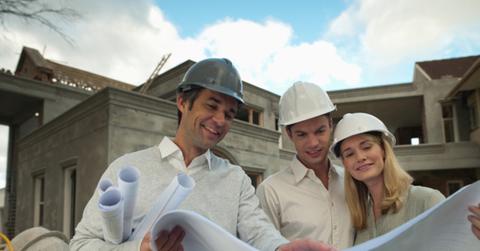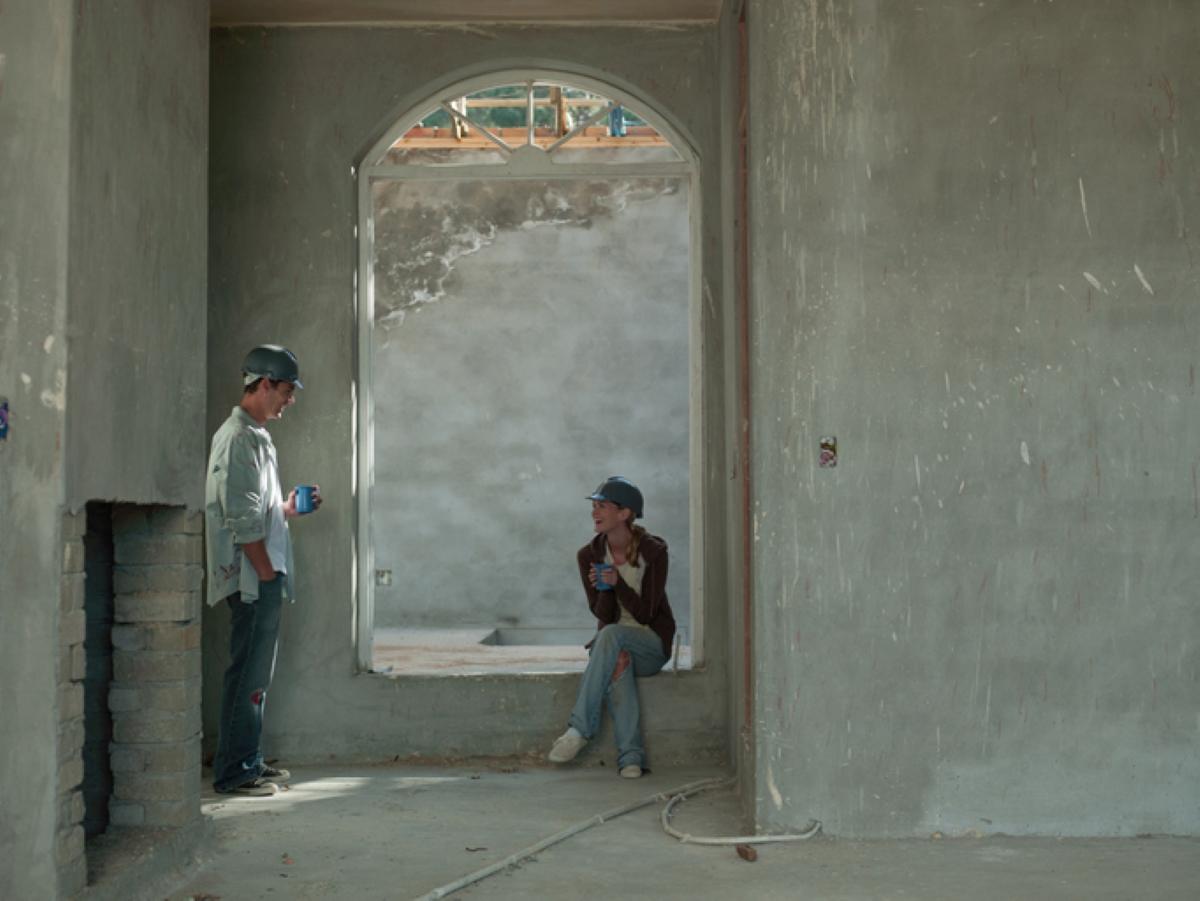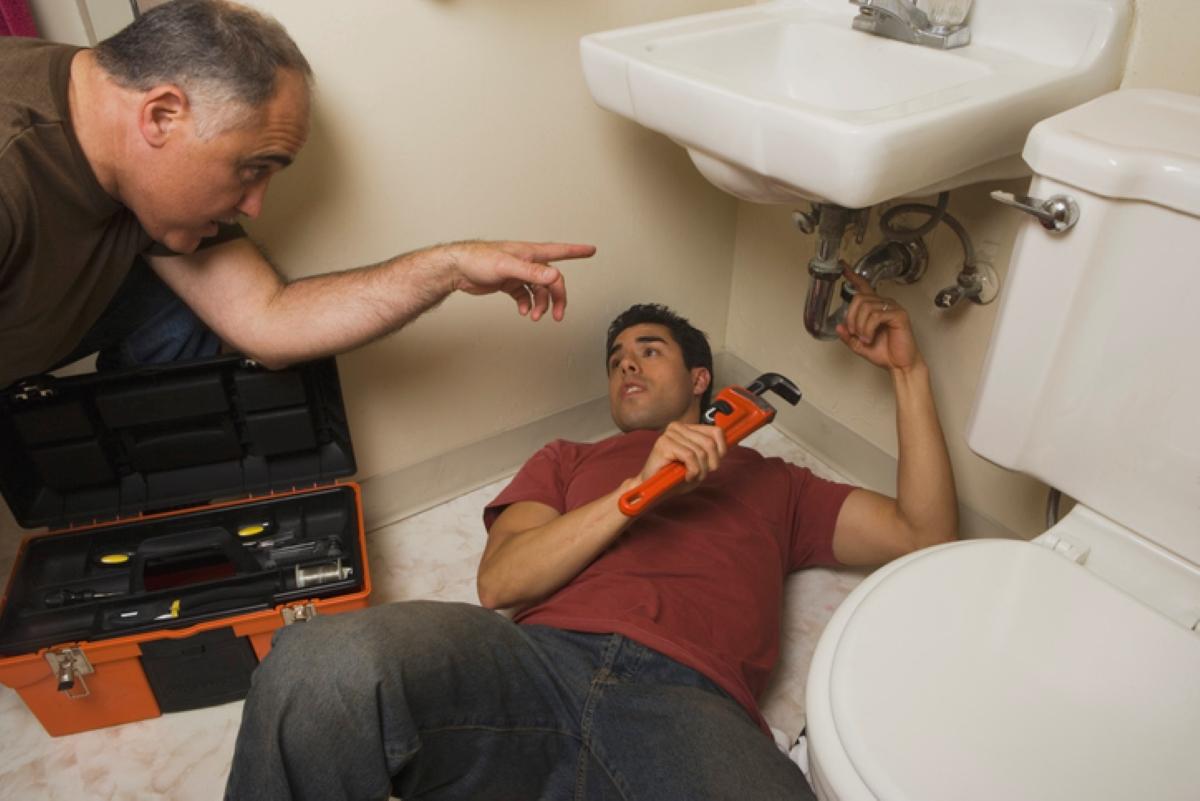How Much Does It Cost to Flip a House? HGTV Makes It Looks Easy
If HGTV is your favorite channel and you've spent a lot of time watching people flip homes, you may wonder how much does it cost to flip a house?
April 5 2023, Published 9:15 a.m. ET

Couple looking at house blueprints.
The reality TV shows on HGTV make house flipping look so easy — find a house, buy it, fix it, flip it, and make a profit — but in the real world, flipping a house is a business that requires knowledge, planning, and finesse.
While flipping homes accounted for 10 percent of all home sales in the U.S. in the first quarter of 2022, the road from rags to riches isn’t always paved in “sold” signs and massive profits.
Just how much does it cost to flip a house? Let’s find out.
How much money should you start with to flip a house?
To get started, you first need to know what the home is worth and how much the repairs and upgrades will cost upfront to avoid paying too much for it. Then you can estimate the perfect purchase price.
Generally, the purchase price of a house is the largest cost to flip it and can set the tone in terms of how much profit you may earn.
We suggest following the 70 percent rule which says that an investor should pay no more than 70 percent of the after-repair value of (ARV) of a property minus the repairs needed. For example, if the home’s ARV is $250,000 and needs $25,000 in repairs, then an investor should pay no more than $250,000 x 0.70 = $175,000 - $25,000 = $150,000.
How much does it cost to flip a house?

Couple chatting during their house renovation.
Flipping a house is expensive but there's more to consider than the cost of the house.
Size: Size can predict the cost. When estimating the price to flip, investors should expect to pay between $10 and $60 per square foot for renovations.
Selling costs: Costs include transfer taxes, property taxes, property insurance, title company fees, and title insurance. As a rule of thumb, you can expect the selling costs to be anywhere from 2 percent–5 percent of the home’s final sale price.
While you may not need to renovate the entire property, it will likely need a deep cleaning. If you can cross off a fraction of the home’s square footage that requires a renovation, it will help you figure out the cost.
Type: If you're flipping a house, townhome or condo, they may be subjected to HOA rules. Apartments may require the same basic updates expected in a flip, but on a smaller scale, like a bathroom renovation or a new kitchen.
Style: Flippers should stick with one type of style and create a cohesive aesthetic. Whether it’s farmhouse, Victorian, or shabby chic, the style of home can add up to a higher renovation cost and a higher flipping value. Renovating a historic home also comes with a higher price for flippers but can qualify for grants to help cover costs of renovations, especially if they’re listed on the National Register of Historic Places.
Age: While a newer home may need fewer upgrades, older homes can incur higher labor costs if contractors deal with health hazards. Even if a home is new, it may be poorly constructed and require more work than an older home.
Condition: A house in good condition may only cost around $20,000 because it requires cosmetic updates like a new floor or paint job. A beat-up home may require a larger budget with investors potentially spending up to $100,000 or more, especially if it’s historical.
HVAC replacement: If heating, ventilation, and air-conditioning systems need repair, the costs can add up quickly with an HVAC unit costing anywhere between $500 and $7,200. Central air costs between $3,800 and $7,600. Replacing a heat pump, ducts, or vents is pricey too.
Labor: By working with multiple contractors, labor costs can be anywhere from $20 to $150 an hour. If you've got an architect, painter, or electrician, it can cost anywhere from $45 to $250 an hour.
Location: Homes located in densely populated areas can cost up to 40 percent more than rural areas. In general, homes flipped in Jacksonville, Fla. are the least expensive, while New York City and San Francisco are priciest. Utah and Missouri rank as the best places to flip houses in terms of low remodeling costs. And while homes in New Jersey have the lowest rental vacancy rate, West Virginia has the highest homeownership rate with the lowest housing costs.
What is micro-flipping in real estate?

Child helping with home renovations.
Micro-flipping is when an investor quickly buys and sells an investment property using technology tools and data, without renovating it.
It’s like online real estate wholesaling where they use technology to find property data, identify buying opportunities that are under market price, acquire them, and quickly sell to another interested buyer.
How do you reduce costs when you’re flipping a house?
To maximize profits, look for ways to reduce costs. Here's how:
- Below market value: Consider foreclosures, short sales, or properties in need of lots of repairs and factor in renovation costs.
- Research and plan: Research the local market and properties, then create a budget and timeline, including expenses and potential challenges.
- Renovate yourself: If you have skills and time, renovate yourself to save on labor costs, but don't take on projects you can't handle or may lead to mistakes.

Plumber working on the sink in a bathroom.
- Leverage your network: Build a reliable team of contractors, subcontractors, and suppliers and establish good relationships with them.
- Negotiate with suppliers and contractors: Shop for the best prices on materials and services and be sure to negotiate discounts for bulk purchases and create ongoing business relationships.
- Sell quickly: The longer a property sits on the market, the more holding costs you'll incur.
- Prioritize high-impact renovations: Focus on improvements that will add the most value such as kitchen and bathroom updates, fresh paint, and new flooring. Don’t overspend on features that won't provide a significant ROI.
- Reuse and repurpose: Look for ways to reuse or repurpose materials from the property or other projects to save on expenses.
